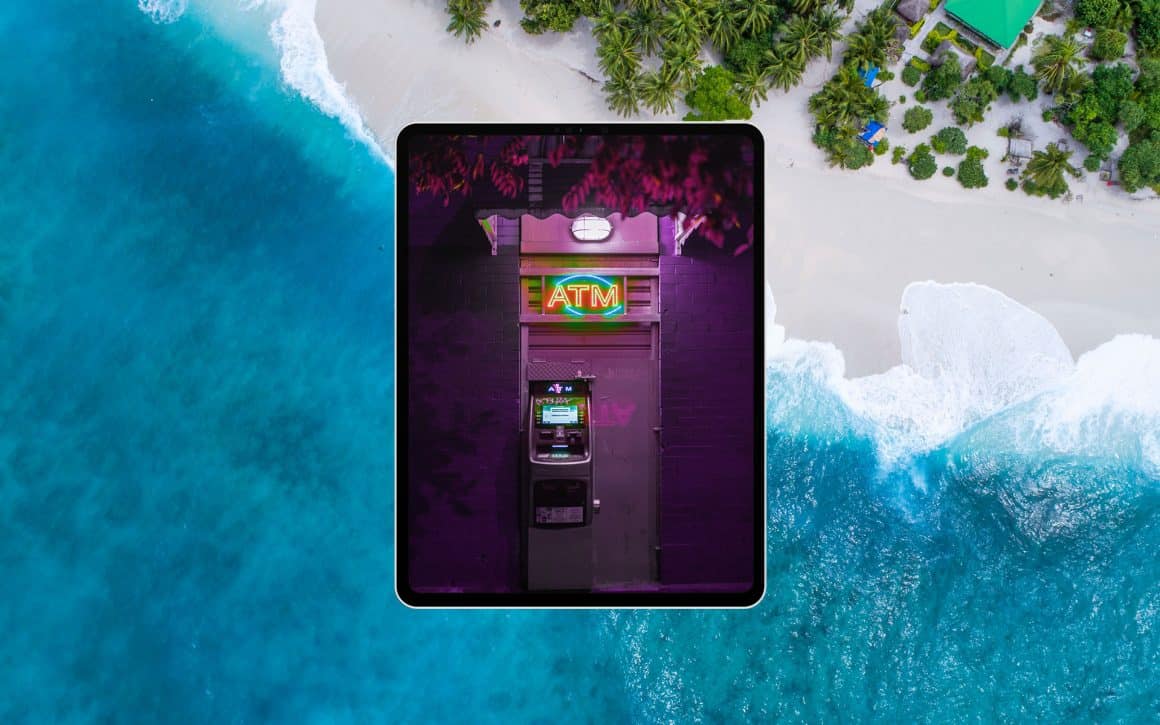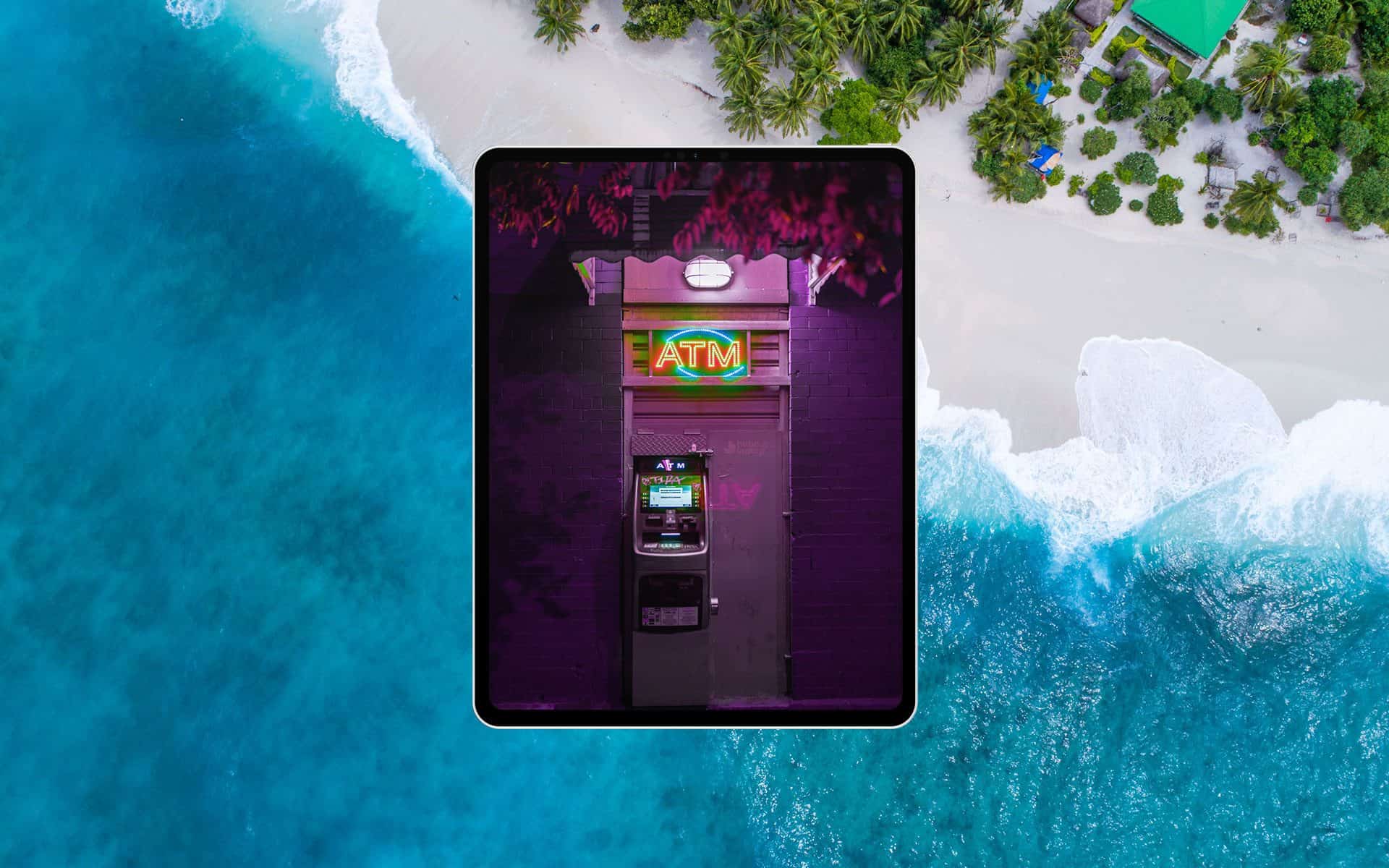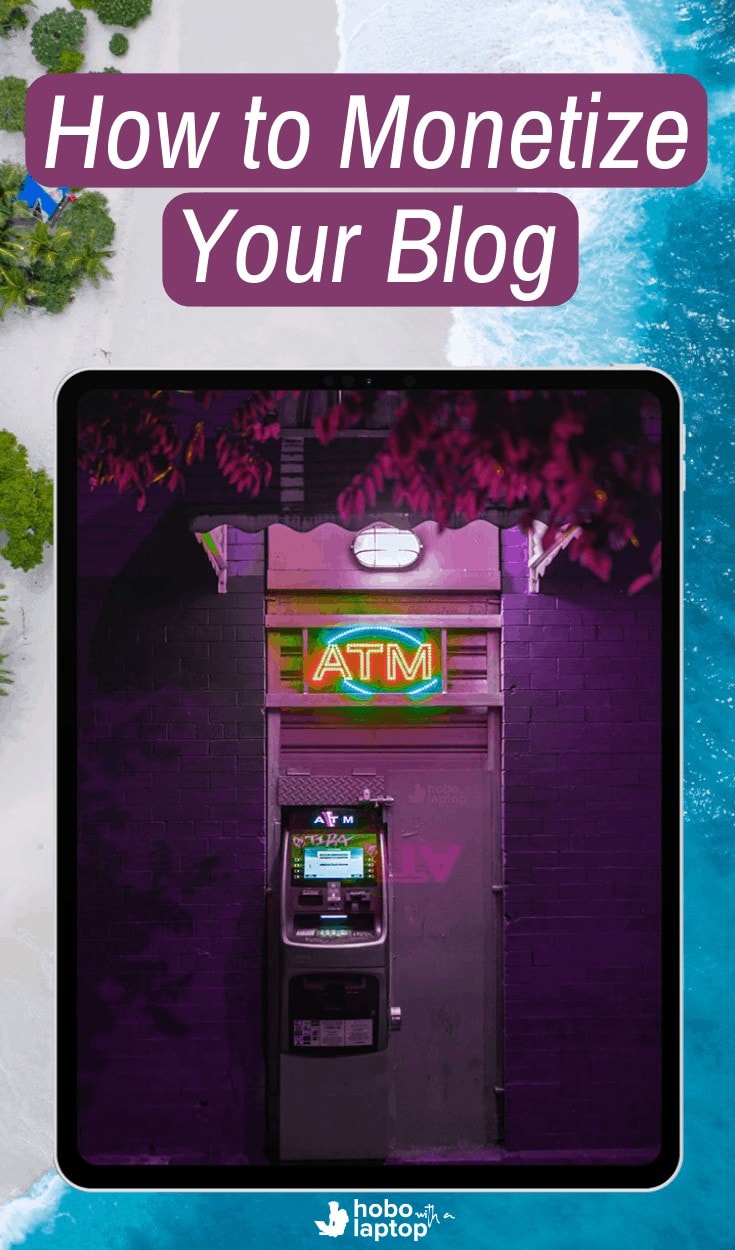

It is still possible to get paid to blog in 2022, 2023, 2024, 5, 6, 7, 8, 9 –in spite of the competition and insane economic downturn. This article will explain how bloggers make money, in 21 different ways.
Table of Contents

Can I Make Money Blogging?
Yes! I got asked this week if blogging was over –if the industry is so saturated, can I make money blogging in 2020? And even though competition is fierce, yes you can make money blogging.
There’s still plenty of room for everyone to get paid to blog, even in 2020, and even if you’re a beginner.
Audiences grow, some move on –but there will always be one interested group coming up behind another wanting to learn from what you’ve learned yourself, or follow along with you and what you’re going through.
That’s the blogger’s circle of life, and it’s something you can bank on.
How Do Bloggers Make Money?
Ok –so, people can still get paid to blog. But how do bloggers make money?
- Provide valuable information to readers and put ads on it, package it up and sell it, or point to other sites with products or services where you make a cut
- Create a product and ship it, offer a service, or sell digital products like photos you’ve already taken
- Build a following and accept sponsors who would like to reach your audience
- Create an event around your blog and the market it serves
- Offer some of your content on a subscription using a “content locker” on your blog
- Use Pinterest in a professional capacity using Tailwind –an effective way to go from 0 to 60 miles-per-hour on a dime as opposed to waiting for Google to rank your site (without Pinterest, we’d likely be dead in the water)
Of course, that’s just a few ways how bloggers make money at a really, really high level. Hopefully I’ve inspired deeper questions I can answer throughout the remainder of this article.
If you’d like to learn more about the nuts and bolts of what goes into any of these blog monetization strategies, keep reading.
Highly Recommended: Pinterest Traffic Course Review

Check Out Our Free Blogging Course!
If you find this post helpful, check out the rest of our free blogging course.
You’ll learn how to start a blog from scratch, make passive income –and much, much more!
Learn Blogging
How to Make Money with a Blog for Beginners
First we’ll look at some blogging principles it’s hard monetize your blog without. And then as we move through this list we’ll isolate a few hard and fast methods to get paid to blog –like how to increase your conversion rate with keywords and the “buyer’s journey”, some of the best affiliate programs to join, and a collection of other ways to make money with a blog for beginners.
1. The Magic Formula
Choose a profitable niche, and then conflate it with an audience that is under-served for best results.
A general fashion blog may be too competitive and vast to make money blogging –almost too broad, too much to handle.
But a “niched down” fashion blog for pregnant and nursing women; that’s precise, profitable, and under-served.
Of course, that’s just one example. What niche and audience will you combine?
2. Keywords Now, Not Later
I cannot stress this one enough –do not gloss over keywords in the beginning. You won’t be able to reach your peak potential with blogging until you understand keywords, key phrases, long tail, short tail, buyer’s intent, and all that other blablabla.
I did for a really, really long time and I am still kicking myself. I could have got paid to blog faster and avoided some slippery financial situations if I had just learned how to leverage proper keyword usage, right off the cuff. It wasn’t even that hard.
Beginners mystify keywords in their head. They make them out to be more complicated than they really are. They often procrastinate and put off learning how to use them effectively.
In reality, a keyword research tool is like the “Teacher’s Edition” of the Internet.
Remember in High School your teachers all had a thicker version of your text book and in the back it had a rubric with all the answers? Yeah. That’s your average keyword research tool. And you could be the most basic “teacher” on the internet and still get paid to blog.
Waiting a year while your site percolates on Google to find out if you were doing things right all along isn’t a very brilliant use of your time. It’s leaving money on the table.
If you want to blog for money, read these articles about keyword research or add this page to Pocket for later:

3. Aim for a Dollar Per Day with Every Post
Write every blog post with the intention that it will make you $1 per day.
Most affiliate links will earn you more than $1 on a conversion, our most popular affiliate programs pay $10 – $50 per conversion. But let’s stick with the dollar-a-day logic to keep these figures conservative.
A 1% conversion rate on an affiliate link isn’t crazy. That’s 1 in 100 people clicking through and making a purchase that you get a cut of. I can’t recall a time we’ve ever had lower than a 1% conversion rate.
If you write at least 1 – 3 posts per week for 9 months. That’s 36 – 108 posts in 9 months.
If you effectively apply keywords and follow suggestions in this article, a new blog or blog post can take anywhere from 2 weeks to 12 months to make it to page one on search engines and get reasonable traffic (still being conservative).
Not every post will make it. To ensure we’re still being as conservative as we can be, let’s cut those numbers in half; let’s say in 9 months you have 18 – 54 posts that actually rank.
So, after starting a blog, it wouldn’t be unheard of to be making $18 – $54 per day after 9 months.
That’s an estimate of $540 – $1,620 per month, or $6,480 – $19,440 per year after your first 9 months.

4. Know Your Audience
Don’t fake it for a profitable niche, know who you’re speaking to and the subject matter intimately if this is your first blog.
This will help you understand their struggle, guide your blog post topics, the solutions you offer, and choose the best keywords to focus on.
Choose your audience, wisely.
We use Pinterest to fish for article topics because Pinterest users tend to pull out their wallets more than Google Search users. If it’s popular on Pinterest, we take the topic and add our own twist to it and then promote the crap out of it.
Using Pinterest professionally with Tailwind is a must once you’ve got a few articles under your belt.
5. Keep it Conversational
“Blog style” writing in most cases should feel like listening in on a good conversation, like a podcast or an above-average speaker. Your writing voice shouldn’t feel “salesy”, rigid or inconsistent when trying to monetize your blog.
Speak in a tone the material and the audience calls for, and do so consistently. Care about people and it will show in your writing.
6. Immediate Relief with a Shot of Dopamine
Write for your audience and engineer an experience. Educate your reader while making them feel so damned good they’ll come back for more.
Have a genuine desire to help them scratch an itch and give them clear, actionable steps within every post that can be done in short order so they feel like they accomplished something quickly.
Stories make learning memorable, they make you memorable, and that means they provide an edge. Your personal stories are a great way to envelope the solutions you provide (and make it easier to get paid to blog in the long run).
Combine stories with short actionable steps, and readers will keep coming back –because your blog posts will feel good going down, and they’ll feel even better when they help the reader improve their situation if only a little, the very same day.

7. Play the Long Game
Write about things that age well. If you write an article about this year’s GoPro, you’ll only have do it all over again when next year’s model comes out (I won’t do that again!).
Stick to “evergreen” content where possible so every post you write has a long shelf life. This way you’ll get more traffic over time and be in a constant state of moving forward as opposed to going backwards and updating articles often.
As you start to think about evergreen content ideas make sure you use a bullet journal to keep track of ideas. Once you have a good list of topics you should do keyword research to optimize the content for better search engine rankings.
Sensational articles may go viral for a week, but will anyone care in a year? If you really want to talk about a fleeting topic, save it for your Facebook page.
8. Join (These) Affiliate Programs
Bloggers make money with affiliate programs that convert well, and/or generate a recurring income for bloggers who participate in them. I’ve touched on affiliate marketing quite a bit already, but I haven’t named names.
Our best performing affiliate programs are from private affiliate sites that manage multiple companies inside one dashboard.
This list will get you started, although every niche is different and the affiliate programs you join will likely vary heavily from our own.
We do well with the following affiliate programs, in order of performance:
- SafetyWing (everyone needs travel insurance, click to view how much we earn)
- FlexOffers (high paying affiliate program for GoToWebinar, Park ‘n Fly, Norton, Aveda, Intrepid, Adidas, etc)
- TargetClick (high paying affiliate program for health/beauty products for men and women)
- PureVPN (excellent VPN, highest paying VPN service for affiliates)
- AWin (TrustedHousesitters, SwagBucks, Lonely Planet book store, Megabus)
- Shareasale (Tailwind, National Debt Relief)
- Refersion (Skyroam)
- Impact Radius (Transferwise, Grasshopper)
- Amazon (nomad gear on our packing list)
- Agoda and Booking.com (travel-related posts)
I recommend you sign up for most affiliate programs after you get at least 25-100 visitors per day –some may reject you otherwise.
Amazon takes just about anyone, but partner programs like FlexOffers are more discerning.
And if they reject you early on, you may never get a second chance.
Go big or go home. View one of our best performing articles for Trusted Housesitters to get an idea of the level of effort we put into blogging for money.

9. Generate Leads for Other Companies
Generating leads for other companies to monetize a blog is slightly different than affiliate marketing.
A common way to generate leads for businesses is to include a phone number or contact form on your website that you and the company you’re generating leads for can track.
This kind of blog monetization is common with high margin products and services, like LASIK eye surgery, botox injections, and so on.
When leads come in via your website they are automatically redirected to the business you’re generating leads for. Should that business ever walk away, you can just swap out the partner business and generate leads for someone else.
How to do it:
- Create a keyword-rich niche website
- Get an account with Twillio or CallRail
- Generate a contact form and phone number
- Rank the website on search engines (outrank the business you want to partner with)
- Negotiate per-lead rate a business will pay
- Point contact form and phone number to said business
- Track each lead and invoice accordingly
10. Offer a Service
While a passive income is the most ideal way to get paid to blog, offering a service can help you start monetizing your blog right away.
Package up your skills into services like we did here for remote work opportunities while your website grows into the passive income you’re working towards.
11. Sell Physical Products
While it’s possible to sell physical products solely on third-party websites like Amazon and Etsy, you’re leaving yourself at the mercy of someone else’s platform if you do.
2019 was a year marked by a pronounced upward spike in Western online censorship. As we’ve seen with sites like Amazon, Tumblr, Facebook, and Twitter; if a company in Silicon Valley doesn’t approve, they can cut you off without explanation.

Selling physical products on your own website is a great way to get paid to blog, while creating a focal point for your customers that no one can shut down or boot you from. Suppliers and fulfillment companies can come and go, but your website is yours.
This is why branding is also so important; you own it –and if it’s attractive enough you might even be able to sell merch with your logo on it to make money blogging easy.
MUST READ! How to Sell T-Shirts Online with No Inventory
12. Sell Digital Products
Bloggers also make money by selling the rights to the media they create. I used to sell Digital Nomad Escape Plan on Amazon and it’s made roughly $10k all on its own, passively. But ebooks aren’t the only sweet spot for selling digital products.
If you take great photos, sell them on iStock –don’t limit yourself to only Instagram –get paid! Great video footage? Sell it on Pond5 or iStock (Netflix’s Birdbox bought controversial footage there), or hell. Make an app.
You’re not always selling a thing. You’re selling the rights for others to use it.
13. “Pay What You Want”
Beyond being an email capture or an ebook for sale, another way we use Digital Nomad Escape Plan to monetize our blog is through a form that allows our readers to pay what they want.
We’ve had many, many happy readers opt to pay for it when given the choice.
We accomplish this with an email-for-download form that’s powered by Gumroad. You can take a look at how it works by clicking the button below:
14. Exclusive Members-Only Content
An old school way to monetize your blog is with selling members-only content via the website itself. That means creating a log in system with a WordPress-based members-only system like MemberMouse, MemberPress, aMember, or Wishlist Member.
If setting up a members-only portal directly under your WordPress website sounds like a lot of work, check out Teachable instead.
Subscriptions
You don’t need to build a course to get paying subscribers. SubscribeStar is a great Patreon alternative that can be set up in minutes and allows users to sign up for your exclusive content behind a login. Subscribers can only access your exclusive content if they’re paying a recurring fee that you decide.
Common forms of exclusive content on SubscribeStar include; monthly Q and A livestreams, personal videos, podcasts, and access to content before it becomes available to the public.
Here’s an example SubscribeStar profile to get an idea of what it looks like and how it works.
Other exclusive content ideas:
- Paid email subscription for insider tips or email courses
- Paid online course on Udemy or Skillshare
- Paid access to live streams, weekly group chats, coaching, or private groups
Why Not Use Patreon?
Patreon has hopped onto the ideological censorship bandwagon and they have very high fees to content creators, SubscribeStar doesn’t.

15. Accept Donations
Accepting a donation is different than using Patreon; on Patreon or sites like it, you’re offering premium content for patrons and they pay what they want. With donations, you’re offering your content as-is and saying –“hey, if you dig my content why not buy me a coffee?”.
Everyone monetizes their content differently, and although this isn’t a method we prefer it isn’t an uncommon way how to make money blogging.
16. Work with Sponsors
After your site begins to attract traffic from search engines, it will also start attracting sponsors who would like you to insert them within the pages of your blog –this is often considered a form of “native advertising” or “brand mentions” by the marketing industry.
The best part is that sponsors will find you, with little to no effort on your part.
Our suggestion is to be prepared; read our blogger rate card so you know what to say, how much to charge, and what to expect.
Any post can be sponsored, well after it’s written.
17. Create an Event
Wandering Earl has his travel tours, Digital Nomad Girls organize retreats, and Remote Year has their remote year. A lot of bloggers will create an event around their blog in order to best capitalize on it.
Logistically, it’s more work, sure. But it’s also a great revenue stream.

18. Embed Ads
Embedding ads is one of the easiest ways to monetize your blog, hands down. Once implemented, you can sit back and accrue small amounts of money for every visitor, or every ad click.
However, as attractive as that might sound there’s a reason we use ads very sparingly.
Ads tend to fill up a visitor’s screen. They’re annoying. They slow down websites. And generally speaking, nobody likes them.
They also don’t pay very well, most of the time.
If you’re going to monetize a site with ads, consider the following:
- Ads lead visitors away from your website –is it worth it?
- Google Adsense is for beginners, anyone can join but they don’t pay well
- For pro bloggers with a lot of traffic, consider RevContent because it pays 30%-50% more than other platforms and our peers love it (we haven’t taken the plunge, yet)
- Your ad revenue correlates to your niche –for instance, a site about financial advice will generate more money per click or impression than say, a blog about pet care
- Traffic volume and site metrics matter; high-paying ad networks like RevContent won’t approve your request to become a publisher if you don’t meet their stringent criteria
19. Repurpose Money-Making Content
After you learn how to write a good article with solid keywords that perform well, you can repurpose it into other modalities –like audio podcasts, videos, slideshows, infographics, ebooks, answers on Quora, Reddit, emails, and so on.
Modify the keywords so it doesn’t cannabalize your article, and post it with affiliate links or a link back to the original article in the description.
This will help you build links to your content and improve your rank on search engines –or put a money-making offer in front of more eyes. Or both.
20. Build Your Email List
If you have a really great post or series of articles that are mutually beneficial (make readers happy while helping you make money blogging), consider turning it into an “email for download” PDF file that you can trade for a person’s email address.
We do this with a number of different guides and checklists. It’s a great way to build your list.
Email Software
Free MailChimp email software will not allow you to use affiliate links inside emails, they’ll give you the boot –but Aweber will allow you to use affiliate links within an email. Use Aweber.
Simply put; the user provides their email address and you send them an email with a download link –and then you send automagic follow-up emails days later that re-iterate the value of said PDF, with affiliate links.
If someone signs up on our digital nomad packing list, I’ll know they probably like to buy travel gear on Amazon. So I will have Aweber “drip” an email series that highlights the top packing list items for digital nomads and monetize our blog with email.
This form of blog monetization happens entirely off-site, in their inbox, and it’s fully automatic.
And this might be a good time to let you know we can do this sort of thing for you.
21. Sell Your Website (Rinse, Repeat)
After streamlining the blogging process, it’s common for experienced bloggers to monetize a blog by selling it. For them, a blog is an asset they build out over the course of a few months or a year and then “flip” it like a house.
If you get to a point where you’ve got an efficient process for building websites, ranking them on search engines and ensuring they turn a decent profit, you may want to consider building several sites at once with the intention of selling them from the very beginning.
The sale price of a website is based on how much it makes per month, multiplied by 9 – 12 months –when I originally wrote this article. Now the multiplier is much higher, like 40 or 50 months. This website was appraised at just over half a million USD in late 2021. You can make a lot of cake if you know what you’re doing.

Anything to Add?
How do you intend to monetize your blog? If there’s an idea on this post that really stood out to you, or there’s one you think needs a little more clarification –please let us know in the comments.
“I’m going to monetize my blog with some of these tips from Hobo with a Laptop”
If you think we totally missed out on a really great blog monetization strategy, shame us in the comments, too! We’d love to hear from you if you’ve tried other ways to get paid to blog and have had success.









